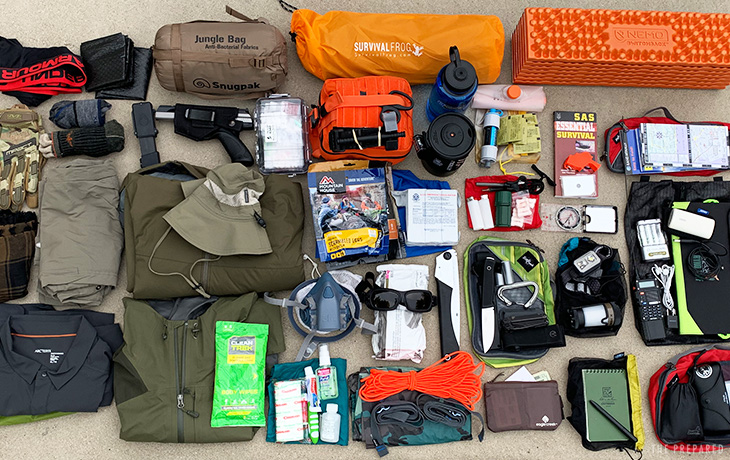In times of uncertainty, having a bugout bag prepared can be a lifesaver. Whether you’re facing a natural disaster, power outage, or any unexpected event, having the right essentials at your fingertips can make all the difference.
Introduction
Bugout Bags Defined: A bugout bag is a portable emergency kit that contains essential items to sustain you during a crisis. It’s your lifeline when you need to evacuate quickly or survive in challenging conditions.
Why Emergency Preparedness Matters: In today’s unpredictable world, being prepared is not just an option; it’s a necessity. Natural disasters, civil unrest, and unexpected events can happen at any time. A bugout bags ensures that you are ready for the unknown.
Essential Components of a Bugout Bag
Water and Water Purification: Water is life, especially in emergencies. Include a water supply and purification tools to ensure you have access to clean water.
Non-Perishable Food Items: Pack nutrient-dense, non-perishable foods to keep your energy levels up. Think about compact and lightweight options.
First Aid Kit: A well-equipped first aid kit is a must. Include medications, bandages, and any necessary personal medical supplies.
Shelter and Sleeping Gear: Consider a compact tent or sleeping bag to provide shelter and ensure a good night’s sleep, even in challenging conditions.
Choosing the Right Backpack
Size and Capacity: Select a backpack that suits your needs. It should be spacious enough to carry essentials but not too bulky to impede mobility.
Durability and Weather Resistance: Invest in a durable, weather-resistant backpack. It’s crucial to protect your gear from the elements.
Comfort and Fit: Comfort matters, especially if you need to carry the bag for an extended period. Find a backpack with adjustable straps for a snug fit.
Clothing and Personal Items
Appropriate Clothing for All Seasons: Pack clothing suitable for different weather conditions. Think layers to adapt to changing temperatures.
Personal Hygiene Essentials: Maintain your well-being with personal hygiene items, including toothbrush, toothpaste, and sanitary supplies.
Important Documents: Keep essential documents, such as IDs, passports, and insurance papers, in a waterproof container.
Navigation Tools and Communication Devices
Maps and Compass: In unfamiliar territory, navigation tools are vital. Include maps and a reliable compass in your bugout bag.
Portable Radio and Batteries: A portable radio provides crucial information. Ensure you have spare batteries for uninterrupted communication.
Emergency Whistle: An emergency whistle is a simple yet effective tool for alerting others to your presence.
Multi-Tool and Survival Gear
Importance of a Quality Multi-Tool: A multi-tool can be a game-changer in emergencies. Choose one with various functions for versatility.
Additional Survival Gear: Flashlights, fire starters, and other survival gear enhance your preparedness. Include these in your bugout bag.
Emergency Planning and Protocols
Creating a Family Emergency Plan: Develop a comprehensive plan that includes evacuation routes, emergency contacts, and meeting points.
Protocols for Evacuation: Establish clear evacuation protocols for your family. Practice them regularly to ensure everyone knows what to do.
Communication Strategies: Establish communication channels with family members and friends. Keep everyone informed during emergencies.
Training and Familiarization
Importance of Regular Drills: Regular drills keep everyone sharp and familiar with emergency procedures. Practice evacuations and response protocols.
Educating Family Members: Ensure that every family member understands the importance of the bugout bag and how to use its contents.
Staying Informed about Local Emergency Procedures: Stay updated on local emergency procedures and adapt your bugout bag accordingly.
Review and Update Your Bugout Bag
Regularly Checking and Replacing Expired Items: Keep a schedule for checking and replacing expired items in your bugout bag. This ensures everything is ready when needed.
Adapting the Bag to Changing Needs: As your circumstances change, so should your bugout bag. Adapt it to suit your current lifestyle and potential risks.
Common Mistakes to Avoid
Overpacking: Avoid overloading your bag with non-essential items. Stick to the essentials to keep your bugout bag manageable.
Ignoring Personal Needs: Consider personal needs, such as medications and comfort items, to maintain well-being during emergencies.
Neglecting Regular Maintenance: Regularly maintain and update your bugout bag. Neglecting it could render your supplies ineffective when you need them most.
DIY Bugout Bag vs. Pre-Made Kits
Pros and Cons of Each Option: Evaluate the advantages and disadvantages of building your bugout bag or opting for a pre-made kit.
Tailoring a Bag to Your Specific Needs: Building your bugout bag allows you to customize it to your specific needs and circumstances.
Community Resources and Support
Local Emergency Services: Familiarize yourself with local emergency services and resources available in your community.
Community Emergency Response Teams (CERT): Joining a CERT program can provide valuable skills and connections in emergency situations.
Testimonials and Real-Life Scenarios
Stories of Bugout Bag Success: Hear stories of individuals who successfully utilized their bugout bags in emergencies.
Lessons Learned from Emergencies: Learn from real-life scenarios to continually improve your preparedness.
Stay Calm and Collected: Mental Preparedness
Importance of a Clear Mind in Emergencies: A clear mind is essential for making sound decisions in emergencies. Practice mindfulness techniques.
Techniques for Managing Stress: Explore stress-management techniques to stay calm and collected during high-pressure situations.
Conclusion
In conclusion, a well-prepared bugout bag is a cornerstone of emergency readiness. By carefully selecting and maintaining your bag’s contents, staying informed, and practicing emergency protocols, you significantly increase your chances of navigating unexpected situations successfully.


